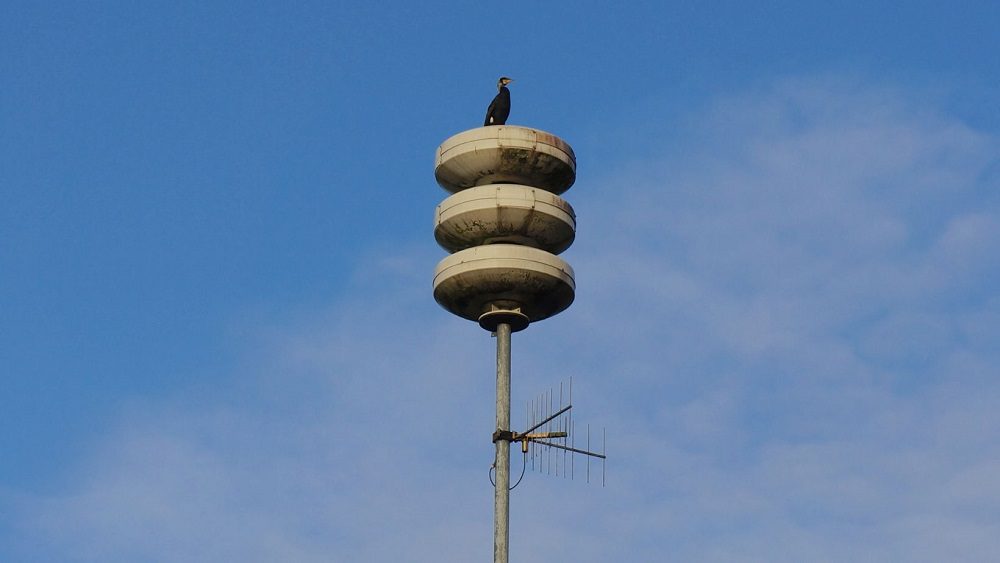SHTFPreparedness may collect a share of sales or other compensation from the links on this page.
Have you ever thought of what it would be like to actually live through an emergency situation, with an emergency broadcast and all? The truth is that it could happen at any given moment, and it’s important to know exactly what a civil emergency message is, what it looks like, and how to react to one.
A lot of people are prone to panic in these kinds of scenarios, especially because civil emergency messages tend to provide only necessary information, and don’t really tell you much about what is actually going on, which can lead to being even more scared or nervous.
However, one of the most important things is to stay calm, and react quickly and in an orderly fashion. Knowing more about civil emergency messages will ensure that you are not taken by surprise, and that you are not left confused, as you will be more familiar with how they work.
So let’s get into talking about them!
What is a Civil Emergency Message?

Let’s start by clarifying exactly what a civil emergency message is.
Also known as CEM, a Civil Emergency Message is essentially a warning that is issued by a local, state, or national government agency.
This is then broadcasted by the NWR system (the NOAA Weather Radio) and the EAS (Emergency Alert System), so that as many people as possible become aware.
Usually emergencies are weather related, but there are all sorts of scenarios and situations that are considered emergencies that the public has to be aware of.
Basically, it is an official message that is broadcasted in order to warn the public of an imminent or ongoing threat, and usually it comes accompanied with instructions on what to do.
How Does Something Become A Civil Emergency?
There are many situations and things that could be considered to be an emergency, so how does something become worthy of being a civil emergency?
Well, for starters, it completely depends on where you are. Some emergency situations are just local, or in a single state, while others are of a national level.
Those in charge of determining whether something is a civil emergency or not are the emergency management office, and they will determine it taking into consideration whether it is a situation that is going to affect everyone in that area or not.
The most common civil emergencies are about weather conditions or natural disasters, such as flooding, strong storms, tornadoes, hurricanes, and similar.
However, other things such as a terrorist threat, or a release of chemicals into the air, could also be a civil emergency. And yes, a zombie outbreak or the apocalypse would also likely be classed as a civil emergency.
How Are Emergency Messages Broadcasted?
It is very important to understand how emergency messages are broadcasted, and to where, so that you can be sure of when an emergency broadcast is legit, and should therefore be taken seriously.
So, when a civil emergency message is issued, it is done so from the local or state emergency management office. The message is sent to the National Weather Service, which will broadcast it through the NOAA Weather Radio.
The message will also be broadcasted over the EAS (the Emergency Alert System), which notifies people of the situation through televisions and mobile phone devices.
So if there is a civil emergency, you should be alerted through the weather channels and radios, through the official news reports, and through a message or notification on your mobile device.
You might be wondering why the NOAA Weather Radio is one of the main means through which emergency messages are broadcast, as it’s just a weather radio, after all.
But there was a study done in the 70s that proved that the national weather service actually had better coverage than other channels, radios, or systems, and as such, they were the best way to reach the biggest amount of people possible.
Plus, having a main office in charge of emergency broadcasting makes things a lot easier and effective, as there is no confusion or disorganization.
Of course, nowadays the EAS is a lot more effective, because a lot more people will see a notification or broadcast that is shown on their phone or on TV, rather than a weather radio.
But if technology failed, or you found yourself in an area without service, the radio would be your best way of finding out what was going on.
It is also worth praising the NOAA Weather Radio system in that it has more than 1000 transmitters, covers all 50 states, as well as neighboring countries and areas.
They broadcast 24 hours a day, 7 days a week, and are highly capable regardless of weather conditions, technological failures, and more.
So…we absolutely 100% recommend that you tune into the weather radio every now and then. In fact, you can also access their website, and by inputting your post code you will receive live information not only on the weather, but of any dangers or risks that are currently in place there.
It’s incredibly useful, and it should absolutely be your first point of contact for figuring out what is going on during an emergency situation.
What To Do When You See Or Hear A Civil Emergency Message?

If you see or hear a civil emergency message, the first thing is to remain calm, and not panic.
The message will usually include directions or instructions, so follow these as if they are law. They are designed to keep you and everybody else safe.
You should also stay away from the areas affected by the civil emergency message, do not try and go near them to “have a look”.
Also, you should make sure to message or phone loved ones, so that they know that you are okay, and do not try to search for you or get into contact. Ideally, keep your contact to a minimum.
A quick phone call or message should be enough, otherwise phone lines and communications might collapse due to everybody trying to get in contact with each other at the same time!
Final Thoughts
A civil emergency message is a warning issued by the emergency management of a state or nation, in which the general public is notified of an imminent or ongoing threat. These messages are broadcasted through the NOAA Weather Radio (NWR) and the Emergency Alert System (EAS).
If you hear or see a civil emergency message, remain calm. Follow the instructions or directives given, notify loved ones that you are okay, and stay put! (Unless the directions instruct you to evacuate to somewhere else, of course).